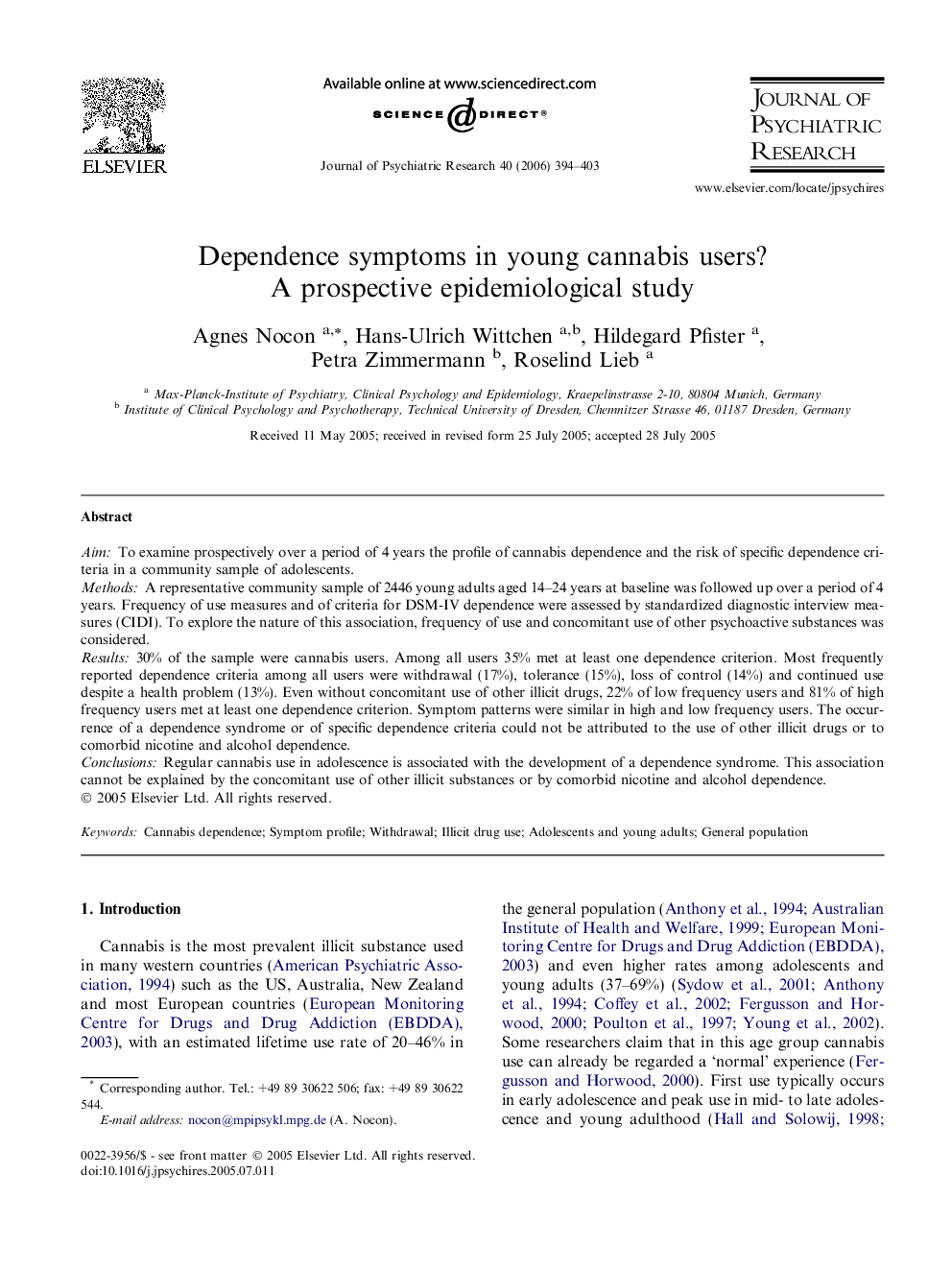| Article ID | Journal | Published Year | Pages | File Type |
|---|---|---|---|---|
| 327956 | Journal of Psychiatric Research | 2006 | 10 Pages |
AimTo examine prospectively over a period of 4 years the profile of cannabis dependence and the risk of specific dependence criteria in a community sample of adolescents.MethodsA representative community sample of 2446 young adults aged 14–24 years at baseline was followed up over a period of 4 years. Frequency of use measures and of criteria for DSM-IV dependence were assessed by standardized diagnostic interview measures (CIDI). To explore the nature of this association, frequency of use and concomitant use of other psychoactive substances was considered.Results30% of the sample were cannabis users. Among all users 35% met at least one dependence criterion. Most frequently reported dependence criteria among all users were withdrawal (17%), tolerance (15%), loss of control (14%) and continued use despite a health problem (13%). Even without concomitant use of other illicit drugs, 22% of low frequency users and 81% of high frequency users met at least one dependence criterion. Symptom patterns were similar in high and low frequency users. The occurrence of a dependence syndrome or of specific dependence criteria could not be attributed to the use of other illicit drugs or to comorbid nicotine and alcohol dependence.ConclusionsRegular cannabis use in adolescence is associated with the development of a dependence syndrome. This association cannot be explained by the concomitant use of other illicit substances or by comorbid nicotine and alcohol dependence.
